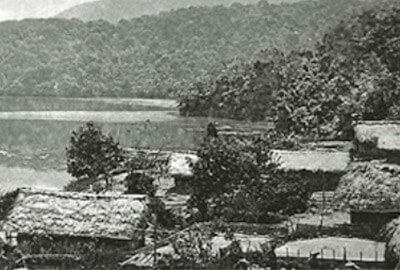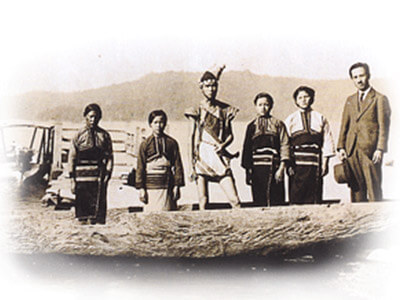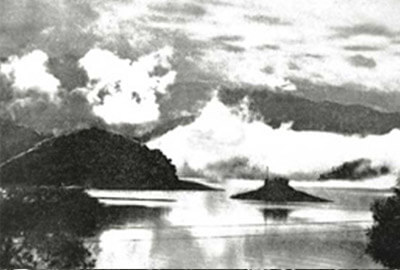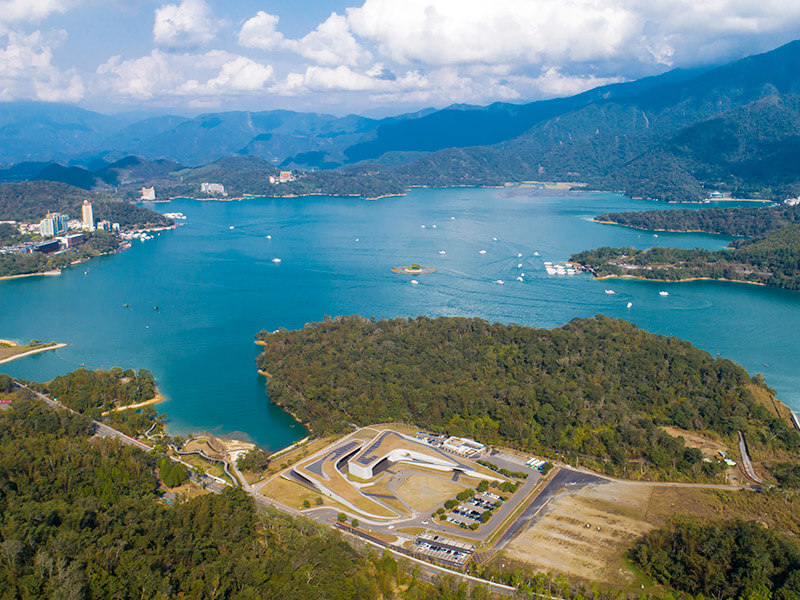Historic Tracks
The Era of the Qing Dynasty

According to legend, an ancestor of the Thao tribe was chasing a white deer, and inadvertently discovered the beautiful Sun Moon Lake. Because there were a lot of fish and shrimp in the lake, the Thao people moved and settled here. In the beginning the Thao people lived in the areas surrounding Sun Moon Lake. According to research, prior to the reign of Qing Dynasty Emperor Daoguang, the Thao tribe had scattered at Shuishe, Shiyin, Maobu, Xincheng, Zhongming and Toushe Townships. During the reign of Qing Dynasty Emperor Daoguang, the Han ethnic group began to expand their settlement into the Thao tribe area. Then by the reign of Emperor Tongzhi, the policy of “Claiming Taiwan and converting indigenous culture to Han culture” was implemented. This caused a large number of Han people to move in. Furthermore, many Thao people had been infected by the plague, and in order to escape from the infectious disease, the Thao people abandoned their original settlement and began to migrate outward. Until now, most of them live in Riyue Village and Dapinglin.
The Era of Japanese Occupation

In 1895, the Qing Dynasty lost the First Sino-Japanese War to the Empire of Japan, and the Treaty of Shimonoseki was signed, ceding Taiwan and Penghu to Japan. Thus, the Japanese rule over Taiwan began. In the beginning, the Japanese exercised force and repression on the people of Taiwan for a period of time. Then they started to focus on building the infrastructure of the colony. Even inland locations like Sun Moon Lake were deeply affected by the development. To develop the sugar industry, the Japanese integrated the traditional sugar factory in the Shuishalian area to the Puli Sugar Production Corporation. In addition, from 1916-1917 push car railways were built, which enabled transportation to run between inland areas and the western parts of Taiwan. Push cars also allowed visitors to travel to Sun Moon Lake, which was a beautiful place that was long sought after by people. As a result, Sun Moon Lake became a famous tourist attraction in Taiwan.
The Era of the Kuomintang Government

After the nationalist government withdrew to Taiwan from Mainland China, Sun Moon Lake became Mr. Chiang Kai-shek’s favorite scenic spot. On the other hand, Hanbilou, located by Sun Moon Lake and built by a Japanese man, Mr. Ito, was still solid after overcoming earthquakes during 1917-1918. It became the favorite place for nobles, merchants and celebrities to hang out. Naturally, it also became a guesthouse for all the foreign diplomats that Mr. Chiang Kai-shek invited to visit Taiwan.
Mr. Chiang Kai-shek’s authority is also visible in the various constructions in Sun Moon Lake – Xuanguang Temple, Xuanzang Temple, Wenwu Temple, Ci En Pagoda, Guesthouses of Chiang Kai-shek, Huanhu Road, etc. – all embody the view of feudal ruling in China, emphasizing the ruler’s absolute power. All these constructions are located at a high point or by main attractions, revealing Mr. Chiang Kai-shek’s view of himself as the “sovereign overseeing his domain”.
The Chiang regime ruled Taiwan for almost half a century. After Mr. Chiang Kai-shek passed away in 1975, the Chiang family’s political power faded, and they could no longer influence Sun Moon Lake’s constructions and development. As the world progressed in a rapid pace, tourism attractions are also popping up constantly. In contrast, Sun Moon Lake’s management faced some new challenges – old facilities, a dirty and disorderly environment, quality of service and image – all needed improvement. When the earthquake shook Taiwan on September 21, 1999, the opportunity to accelerate the transformation of Sun Moon Lake finally arrived…
The Transformation of Sun Moon Lake

In order to expedite the rebuilding of the Sun Moon Lake area, the Tourism Administration established the Sun Moon Lake National Scenic Area Headquarters on January 24, 2000. This organization shouldered the responsibility of reconstructing and developing tourism in Sun Moon Lake following the aftermath of the earthquake, and gave Sun Moon Lake rebirth from a pile of broken rubbles. The vision was a tranquil Sun Moon Lake that’s safe, sustainable, beautiful, and a culturally rich area that belongs in the 21st century.
In recent years, the Sun Moon Lake National Scenic Area Headquarters has been actively engaged in the design and planning of construction projects, focusing on the management of the scenic area, travel safety and organizing various events. These tangible and intangible projects greatly improved the recreation environment and overall quality of the scenic area. Visitors are full of fond memories from their trip.